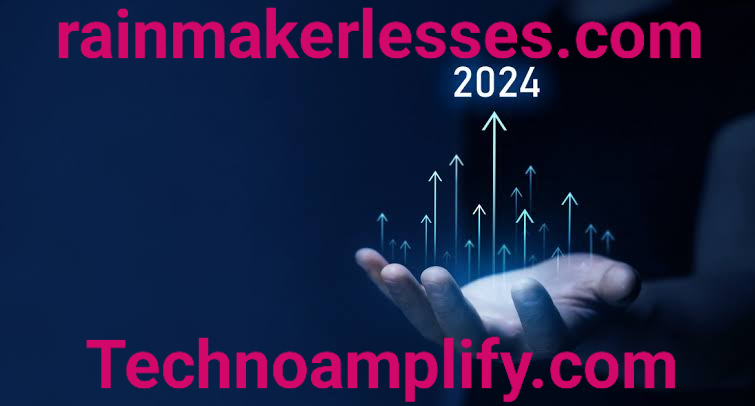Introduction
In the modern business world, organizations often depend on “rainmakers”—those few high-performing individuals who drive substantial revenue and success. But what happens when companies focus on creating systems and strategies that don’t rely solely on these key players? This is where the concept behind Rainmakerlesses.com shines. It empowers businesses to scale sustainably, ensuring long-term success without becoming overly reliant on a handful of individuals.
This article explores the philosophy, strategies, and benefits of adopting a “rainmaker-less” approach. We’ll dive deep into how businesses can thrive by building robust systems, enhancing team collaboration, and investing in holistic growth practices.
What is Rainmakerlesses.com? Understanding the Philosophy
Rainmakerlesses.com embodies the philosophy that businesses should not depend entirely on a small group of individuals to succeed. The term “rainmaker” is often associated with top salespeople, influential leaders, or key figures who bring in significant deals or opportunities. While these individuals are valuable, over-dependence on them creates vulnerabilities, such as risks of burnout, skill gaps, or instability when they leave.
This platform provides insights, tools, and strategies to create a sustainable and balanced growth model. By adopting this approach, companies can focus on collaborative efforts, strong systems, and scalable processes that empower the entire team rather than a select few.
Why Businesses Should Move Away from the Rainmaker Dependency
1. Mitigating Risks of Over-Reliance
Relying heavily on a single rainmaker poses significant risks. If this individual leaves, underperforms, or becomes unavailable, the company’s growth may stagnate. A “rainmaker-less” system diversifies responsibilities, ensuring continuity in operations regardless of individual contributions.
2. Fostering Teamwork and Collaboration
A rainmaker-centric culture can unintentionally stifle teamwork. Other employees may feel undervalued or disengaged, thinking their efforts pale in comparison to the rainmaker’s. By implementing collaborative strategies, organizations can unlock the full potential of every team member, creating a more cohesive and productive workforce.
3. Encouraging Sustainable Growth
Rainmaker-dependent businesses often focus on short-term gains. A rainmaker-less model, however, emphasizes long-term strategies. This includes building efficient processes, investing in employee development, and fostering a culture of innovation.
Strategies to Transition Towards a Rainmaker-Less Business Model
1. Build Strong Systems and Processes
Establishing robust workflows and operational systems is key to reducing reliance on individuals. Automated tools, clearly defined processes, and consistent training programs help ensure that tasks can be seamlessly handled by any team member.
2. Focus on Team Development
Empowering the team is crucial. Provide regular training, encourage skill development, and create opportunities for employees to contribute meaningfully. A well-rounded team can collectively achieve what a single rainmaker might accomplish.
3. Leverage Technology for Scalability
Modern tools like CRM software, project management platforms, and AI-driven analytics can help businesses automate tasks and enhance efficiency. This reduces the burden on individuals and enables the team to work smarter, not harder.
4. Diversify Revenue Streams
Instead of relying on a single rainmaker to generate revenue, businesses can explore multiple income sources. This could include new products, services, or markets, spreading the risk and creating stability.
5. Encourage a Growth-Oriented Culture
A growth mindset within the organization motivates employees to innovate and take ownership. Recognizing and rewarding contributions across the board fosters a sense of belonging and reduces the dependency on rainmakers.
Real-Life Examples: Companies Thriving Without Rainmakers
1. HubSpot
HubSpot, a leader in inbound marketing, focuses on creating scalable systems and empowering all employees. Their success stems from leveraging technology, training, and collaboration rather than relying on individual contributors.
2. Basecamp
This project management company prioritizes simplicity and efficiency over aggressive sales tactics. Their team-driven approach ensures that success is shared and sustainable, reducing dependence on standout performers.
3. Zappos
Zappos is renowned for its exceptional customer service, which stems from its team-first culture. Every employee is encouraged to contribute to the company’s mission, showcasing how collective effort can replace the need for a single rainmaker.
Challenges in Implementing a Rainmaker-Less Strategy
Transitioning to a rainmaker-less approach isn’t without its challenges. Companies may face resistance from employees accustomed to traditional structures or struggle to shift their focus from individual performance metrics to team-based goals. However, with patience, clear communication, and consistent reinforcement of new values, these obstacles can be overcome.
Conclusion: The Future of Business Without Rainmakers
Rainmakerlesses.com is more than a concept—it’s a movement toward sustainable, inclusive growth. By focusing on systems, teamwork, and technology, businesses can achieve greater stability and resilience. This approach not only safeguards against risks but also empowers every member of the organization to thrive.
In a world where change is constant, the rainmaker-less model ensures that businesses are prepared for the future, built on a foundation of collective strength and innovation.
Frequently Asked Questions (FAQs)
1. What is the main goal of Rainmakerlesses.com?
Rainmakerlesses.com aims to help businesses reduce their reliance on top-performing individuals, focusing instead on creating sustainable systems and empowering teams.
2. How can companies begin transitioning away from rainmaker dependency?
Start by building robust processes, investing in team development, leveraging technology, and encouraging a collaborative culture.
3. Are there risks to adopting a rainmaker-less approach?
While the transition may initially face resistance or adjustment challenges, the long-term benefits outweigh these short-term difficulties.
4. Can this model work for small businesses?
Absolutely. Small businesses can benefit significantly by building systems and fostering teamwork, ensuring stability and growth even with limited resources.
5. Is Rainmakerlesses.com only applicable to sales-driven organizations?
No, the principles can be applied across various industries and departments, from operations to marketing, ensuring holistic business growth.
Let me know if you’d like to refine this or add any specific details!
Also Read This : Rainmakerlesses.com: Unlocking Business Growth Without Relying on Rainmakers


